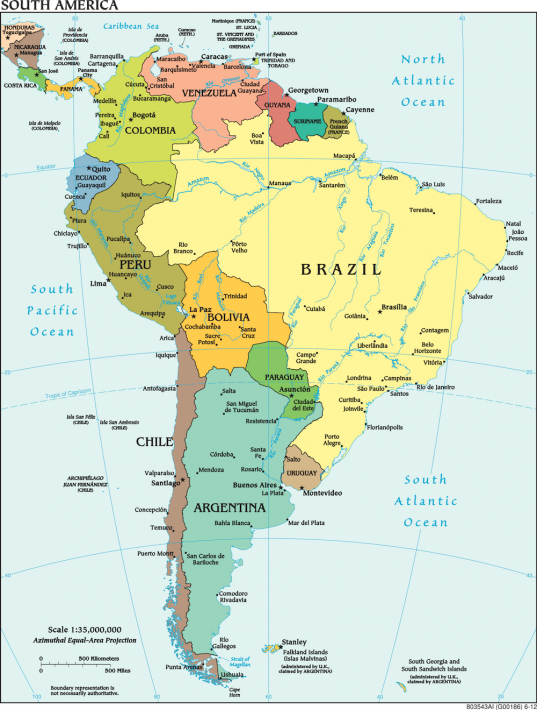From Bondis & Buses: Essential Spanish Terms You Need to Travel South America
The majority of countries in South America may be Spanish speaking, but that doesn’t mean they speak the same Spanish. Travellers are often stumped when they find the word they learnt in one country means something entirely in the next country. This can make getting around a little tricky when the words for different kinds of buses and other transport is also different. So make sure you learn some basic survival Spanish transport terms to get around South America.
Photo via Wikimedia
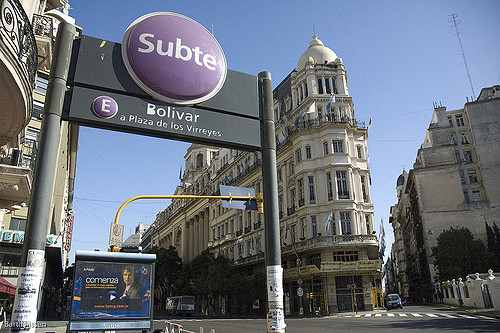
Head underground in Buenos Aires on the Subte. Photo via Flickr.
Argentina:
Starting in Southern South America, Argentina has many transport options, and a variety of names. Navigating the capital city of Buenos Aires is easy thanks to a sprawling network of buses, supported by the subte (underground system) and taxis. To get around by bus, these are the terms you need to know:
Colectivo: The city buses that you use to get around are called colectivos, coming from vehículos de transporte colectivo (vehicles for collective transport). Figure out your route using the infamous Guia T (a book with all the colectivo routes) or fire up an easier to use app like CómoLlego, and swipe your sube card (the same transport card used on the subte), and navigate the city.
Bondi: You’ll hear the locals refer to the colectivo as bondi. This informal word is part of Lunfardo, the Argentine slang used primarily in Buenos Aires. There are two theories about the origin of this word. Some say it comes from the diminutive of albóndiga, meaning meat ball, since the old city buses used to be fairly round in shape. Others argue that it comes from Brazil. The old tramways of São Paulo used to have the word bond in front of the ticket price. Since Brazilian Portuguese adds an “e” sound to the end of words that end in a consonant, it became bonde. This reportedly travelled south to Buenos Aires and Montevideo where it became bondi.
Omnibus or micro: For long distance and inter-city buses, Argentines use omnibus or micro. It’s worth pointing out that these buses in Argentina are not your typical greyhound buses. They’re usually double deckers with luxury cama options with seats going down flat, meals and even wine served on board.
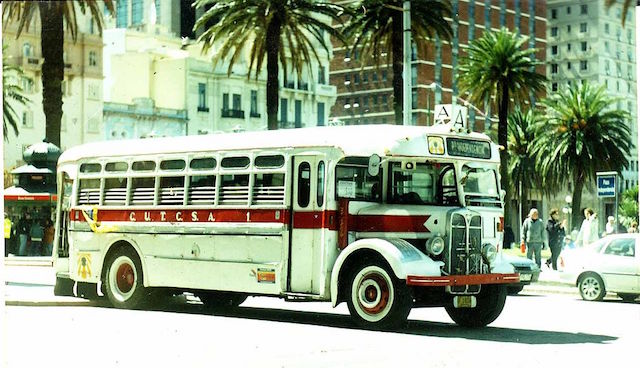
Uruguay is easy to navigate by bus. Photo via Wikimedia
Uruguay
From Buenos Aires you can take the ferry (transporte fluvial) across the Río de la Plata, where you’ll find the dialect very similar to Argentina’s capital. There are even overlaps with slang, such as bondi for city buses. But there are still some differences.
Ómnibus: The most common term for public buses in Uruguay is ómnibus, whether it’s an urban bus, inter-city bus or international bus.
Bañadera: A school bus is referred to as a bañadera.
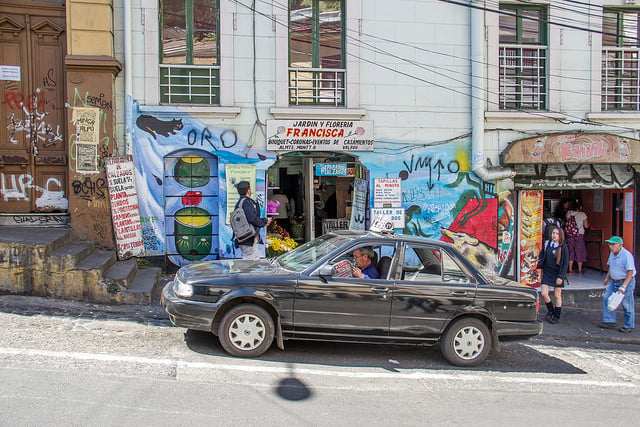
Ride in a Taxi Colectivo in Valpo! Photo via Flickr
Chile
Across the Andes in Chile you’ll need to switch up your vocabulary. The most commonly used term for urban buses is micro, while the underground in Santiago goes by metro and not subte. Other terms you should know in Chile are:
Liebre: The small buses in Chile are called liebres.
Bus: Long distance buses in Chile are referred to simply by bus.
Taxi colectivo: In the coastal city of Valparaíso, not only can you take a micro, a liebre or a taxi, you can also take a taxi colectivo. These look like regular cabs but run along set routes and pick up multiple passengers.
Paraguay
If you’ve been travelling to Paraguay’s neighbours to the east or south, you won’t have any problems getting around. You’ll find a similar usage of micro, colectivo, ómnibus and bondi here.
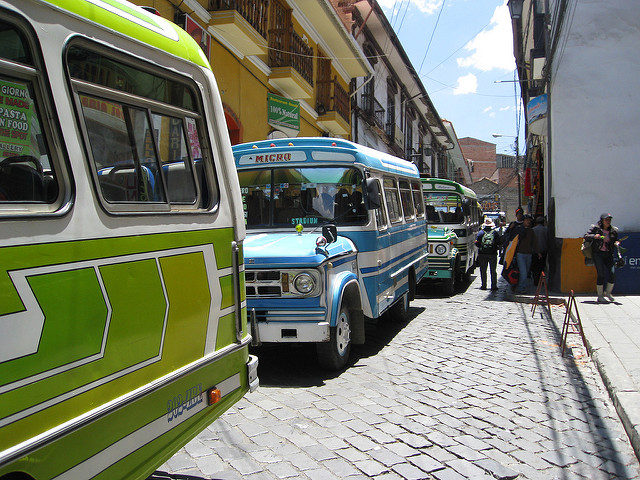
Hop on a trufi in Bolivia. Photo via Flickr
Bolivia
Heading further north, you’ll find a greater diversity of words for transport. Bolivia has no shortage of terms referring to different types of public transport around the country.
Micros: These are the minibuses that serve urban areas for short trips, following set routes.
Trufis: Similar to Chile’s taxi colectivo, a trufi is a type of taxi or minivan that has a set route and picks up other people. It’s a cheaper way to travel than taxi, without the crowds of a bus.
Flota: If you’re taking a big inter-city bus (like the popular La Paz to Uyuni route), it’s called a flota. You’ll notice many bus lines include the word, such as Flota Bolivar. You can also use bus or ómnibus to refer to these buses.
Peru
Travelling north to see Machu Picchu and explore Cusco and Lima, Peru’s transport terms differ again. Normal buses are called ómnibus or bus, so no surprises there. Don’t forget these terms though:
Mirabus: This is used for the double-decker buses aimed primarily at tourists.
Micro or Combi: The smaller city buses in Peru go by either micro or combi.
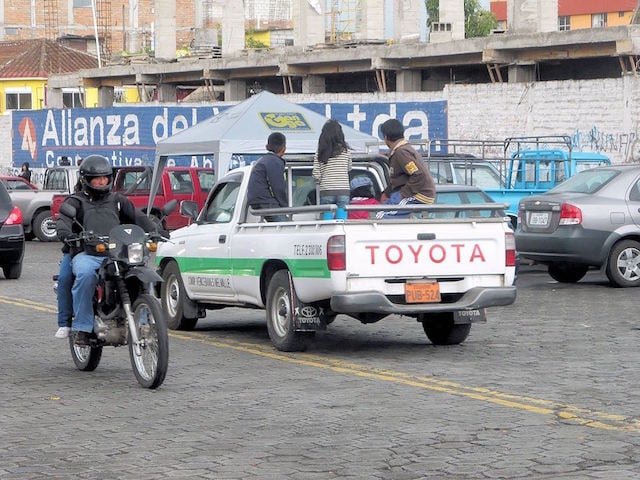
Take a ride in a camioneta in the North of Ecuador. Photo via Wikimedia
Ecuador
North of Peru you can start using colectivo again, as well as bus. There are also some new types of transport here you might not have seen before.
Buseta: The small minibuses in Ecuador go by busetas.
Rancheras: Another form of transport in Ecuador is open-sided trucks, with wooden benches to sit on. These are called rancheras or chivas.
Camionetas: If you’re heading somewhere on rough roads, you also have the option to take a pick-up truck, or camioneta.
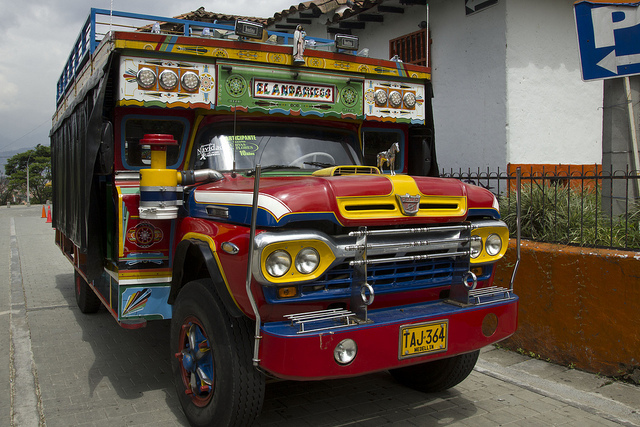
A ride in a chiva is a must in Colombia. Photo via Flickr.
Colombia
Colombia’s transport terms have a lot in common with its neighbours in the north of South America. If you’re travelling in the big cities, you’ll quickly get acquainted with the TransMilenio in Bogotá, a bus rapid transit system, and the Metro in Medellín, an urban rail system with also encompasses the Metrocable aerial cableway. As for the buses, you’ll find bus and colectivo in common use, but here are some extra terms to know:
Buseta: Like in Ecuador, minibuses are called busetas, although microbús is also used.
Chiva: A classic form of transport in Colombia is the chiva, an open-sided truck, usually made from wood, and typically painted in bright colours. The name comes from the Spanish word for goat, and these trucks are well adapted to rural, mountainous terrain. Of course, they’re now often used as party buses for tourists. Chivas also go by bus de escalera (bus of stairs).
Venezuela
While travelling around Venezuela isn’t the safest at the moment, those real adventurous travellers should at least arm themselves with the right vocabulary to make getting around a little bit easier.
Por puestos: The most common way to get around cities, a por puesto in Venezuela can be either a car or minibus. They’re pretty chaotic as there aren’t usually set stops, so you’ll need to flag one down. The cars are often called carritos.
Mototaxi: If you want a thrill take a motorbike taxi. Remember, mototaxis are not for the faint hearted or those with luggage.
Bus or autobús: This is used for the large buses that you would take between urban areas.
Buseta, microbús, camioneta, micro, carro or carrito: The names of city buses change depending on where you are in the country.
Confused by the multiple names for buses? Don’t worry. While using the right term will help eliminate confusion, if you get stuck just use “bus” and explain where you’re trying to go. Most locals will happily help you out. And don’t forget to brush up on your Spanish before you go!



